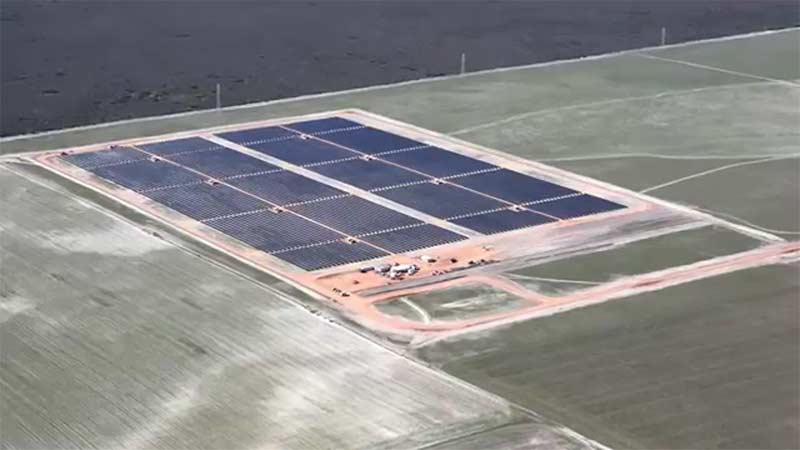Noting that Western Australia lags behind the rest of the country in greenhouse gas reduction, the Environmental Protection Authority (EPA) has revised its guidance on mitigating greenhouse gas emissions from new or expanding proposals in Western Australia, signaling its intention to recommend offsets for proposals with direct emissions above 100,000 tonnes of carbon dioxide equivalent per annum.
The environment watchdog has laid down new air quality standards, noting that future resource proposals, LNG projects in particular, risked further increasing the state’s emissions “by a large margin to 2030”.
EPA Chair Tom Hatton said while the EPA Board recognised the lead role of the Commonwealth Government in relation to Australia’s international obligations on reducing emissions, it noted there was a need to clarify and provide greater certainty in the EPA’s consideration of greenhouse gas emissions.
“Over the past two decades the EPA has recommended greenhouse gas abatement measures for around 40 proposals however more needs to be done to limit global warming, consistent with the Paris Agreement,” Hatton said.
Stressing that the federal climate policy lacks “an effective carbon restraint or rate”, the EPA also expressed concerns about WA’s rising emissions, which had increased by 27% from 2000 to 2016.
“Western Australia has the second highest per capita emissions of all Australian states and territories, with emissions per capita well above those of other developed economies, including resource-based economies such as Canada,” the guidelines state.
While some green groups have described the move as balanced and sensible, the revision of guidelines provoked an immediate outcry from the industry, which voiced fears it could thwart proposed new LNG projects worth tens of billions of dollars.
“As a responsible State Government it is important to ensure that projects have certainty for the long term,” said Environment Minister Stephen Dawson. “The McGowan Government is fully supportive of our job-creating LNG industry and will listen to their views as part of our response to the EPA.”
WA Premier Mark McGowan also made clear he was not willing to endorse the new guidelines, adding that the EPA had overreached.
“To just apply these guidelines to new projects would mean those projects are penalised against older projects, and just to apply it to LNG projects means the massive coal exporters in NSW and Queensland get away scot-free while the LNG projects – which produce half the emissions of coal from NSW and Qld – get penalised,” McGowan said speaking on ABC radio.
The WA government also underscored that it was in the process of developing a new coordinated climate policy for the state, which is to be delivered by the year’s end and ensure it played its part in meeting national emissions targets. “It is the State Government’s view that emissions mitigation is best managed through a nationally consistent approach,” it said in a statement, dismissing the proposed guidelines out of hand.
Strategy for a greener grid
While it still lacks a renewable energy target or a net zero emissions target, WA appears to be in line for a modernization of the wholesale electricity market with the aim to enhance power system security and enable new, largely renewable generators to access Western Power’s network.
Last week, the McGowan government launched a strategy for a better co-ordinated power system, noting that the electricity sector is experiencing a major transformation because of the rapid uptake of rooftop solar panels and battery storage systems, and increasing levels of large-scale renewable generators, such as wind and solar farms.
Announcing the strategy, Energy Minister Bill Johnston noted that it was clear that the generation mix would continue to change, so it was important to have a whole of system approach to plan for the future.
“In Western Australia, we’re blessed with world-class solar and wind resources, abundant gas supply, a wealth of battery metals, and a highly skilled workforce,” said Energy Minister Bill Johnston. “We have a genuine opportunity to lead the way in establishing a cleaner, brighter and more resilient energy supply for decades to come.”
The WA government had already launched a separate strategy to grow WA’s future li-ion battery manufacturing industry, which includes plans for an investment attraction strategy.
The Whole of System Plan will be complemented by a Distributed Energy Resources (DER) Roadmap, which will guide the integration of onsite generation (largely rooftop solar), battery storage and future technologies such as electric vehicles. The DER Roadmap will be produced by the end of 2019 and the first Whole of System Plan in mid-2020.
This content is protected by copyright and may not be reused. If you want to cooperate with us and would like to reuse some of our content, please contact: editors@pv-magazine.com.









1 comment
By submitting this form you agree to pv magazine using your data for the purposes of publishing your comment.
Your personal data will only be disclosed or otherwise transmitted to third parties for the purposes of spam filtering or if this is necessary for technical maintenance of the website. Any other transfer to third parties will not take place unless this is justified on the basis of applicable data protection regulations or if pv magazine is legally obliged to do so.
You may revoke this consent at any time with effect for the future, in which case your personal data will be deleted immediately. Otherwise, your data will be deleted if pv magazine has processed your request or the purpose of data storage is fulfilled.
Further information on data privacy can be found in our Data Protection Policy.